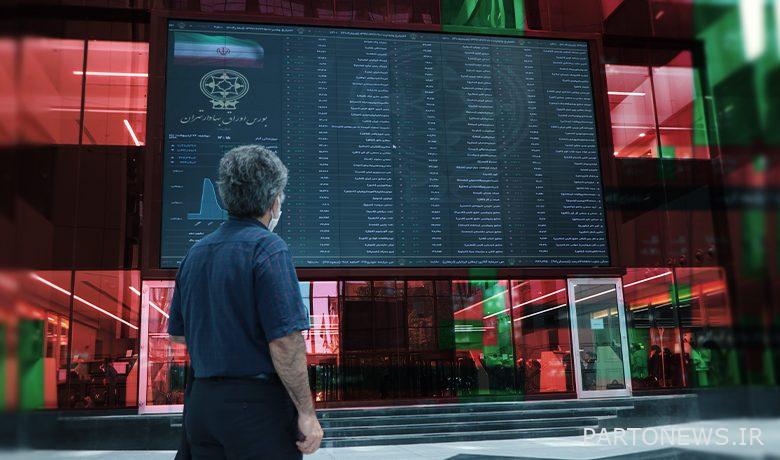The future of the stock market in three different scenarios

Last week, the stock market continued the upward trend that started from the beginning of June (June 3 floor) to grow by 5.6 percent, reaching 35% in the recent rally and the overall index to rise for the eighth consecutive week.
Despite the significant dimensions of the recent growth of the stock market, especially in export and dollar-dependent industries, the value of trades despite the relative growth is still less than 10 thousand billion tomans, which compared to the high value of stock trading last year, a kind of caution in this market. It is associated. On the supply side, sellers also seem reluctant to divest stocks and are skeptical about recognizing profits despite rising prices. In the parallel market, the free dollar has once again entered the sensitive channel of 26,000 Tomans. The importance of this area is that in the last 9 months, this channel has repeatedly prevented further price growth. Given the direct effect of the exchange rate on the profitability of an important part of listed companies, these market developments are closely monitored by shareholders.
The future of the stock market in three different scenarios
There is a famous saying in the financial markets that says; “Rising markets usually rise above the wall of concern and declining markets slide down the slope of hope.” Perhaps the downward trend will end as soon as possible; Which, of course, does not usually happen. This description is very consistent with the current situation of the Tehran Stock Exchange, because despite the daily rise, there is a kind of uncertainty about the continuation of the current path in the minds of investors. Looking at macroeconomic variables, the reason for this concern can be explored. The fact is that according to many experts, the most important priority of the Iranian economy in the current situation is how to meet the large budget deficit of the government this year; The deficit, which is up to an unprecedented range of more than 10% of GDP, is estimated at 450,000 billion tomans.
According to the official report of the Central Bank, the lack of effective measures to cover this deficit in the first quarter of this year has led to the use of salaries in the form of withdrawals from the institution up to 55,000 billion tomans and has set a record for the historical monetary base in the spring of 1400. The case of this clearly unstable situation is now on the table of the thirteenth government, in the face of which three scenarios can be imagined.
In the first case, the resumption of sanctions and the lifting of oil sanctions and access to blocked reserves are noteworthy. In this scenario, given the current oil prices and the volume of available reserves, a budget deficit of about $ 20 billion (with a value of half a dollar) is available, which, if realized in the second half of the year, could reduce the current inflammation of monetary base growth and inflation expectations. To a large extent inhibit.
The second case is the large volume of bonds that can be sold in the market, which requires courage in the immediate sale of bonds with higher rates and shorter maturities. The third scenario is the continuation of the current situation, which means providing a deficit from the central bank’s strong money and unprecedented growth of the monetary base and liquidity. It should be noted that other structural methods include tax reform, elimination of subsidies, reduction of government spending, etc., none of which seem to be operational in the short term. The important point is that each of the above three methods has completely different consequences for the Iranian economy and financial markets, including the stock market. In the first scenario, by creating currency calm, curbing rising inflation in asset prices and general stabilization of economic conditions is expected.
In the second scenario, with the growth of the nominal interest rate and the channeling of liquidity in the banking system, it is possible to reduce inflationary inflammation by improving the situation of real negative interest rates, which of course depends on the market capacity to attract securities. The consequences of this scenario are similar to the atmosphere in the second half of last year, which was followed by market stagnation and relative control of inflation growth.
In the third case, taking into account the dimensions of the deficit, conditions will be created in terms of monetary base growth and liquidity that do not exist in the last four decades. Given the growth rate of inflation and liquidity at historical ceiling levels, the consequences of the third scenario can be interpreted as rising inflation and the entry into self-reinforcing cycles of price growth and liquidity growth. In this case, asset markets usually largely manage to offset the effect of the jump in inflation but do not allow for real (deflated) profit. Given the different implications of adopting each of the above three methods (or a combination of them) in the face of the budget deficit problem, it is natural that uncertainty prevails over the upward space of the Tehran Stock Exchange and in proportion to receiving signs of moving towards each scenario, investors To fluctuate.
Lessons from the Bitter Experience 99
The rise and fall of the Tehran Stock Exchange last year became the most widespread ups and downs of this market in the entire history of the financial institution. This path, which recorded a bitter memory in the minds of newcomers due to the involvement of a large part of society in the stock market, was also due to the mistakes of economic policymakers due to the slow decisions in the field of stock supply. Paying attention to the “lessons of this experience” is also important in the current situation. The fact is that the behavior of the Tehran Stock Exchange in recent years has been less balanced and has formed the waves of continuous rise and fall. The characteristic of incremental waves is the creation of momentum in the entry of applicants and finally the formation of emotional and irrational atmosphere in the behavior of buyers, which determine the formation of the price bubble and the next unfortunate consequences. In the current situation, although there are no signs of significant price deviation from intrinsic value, but the continuing upward trend, along with the intensification of some problems in the production and sale of companies due to power outages, provides a potential repetition of previous problems if stock growth continues to accelerate in the short term. has done.
Given the experience of the past year, on the one hand, and the growing need of some major stakeholders, such as Social Security and liquidity pension funds, it seems necessary to pay attention to the issue of boosting supply before the emotional climate prevails. On the other hand, due to the long queue of ready-to-offer companies, stock exchange and over-the-counter companies can also use the potential to accelerate initial public offerings.
Global market view of the meeting of central bank governors
Every year at a Jackson Hall meeting in the United States, the central bank governors of the major Western economies and members of the Federal Reserve meet to review the latest state of variables and policies in this area. The importance of this meeting is that historically, during it, important news of policy change and monetary orientation was announced. Currently, one of the most important areas of focus for international markets is the fate of the Federal Reserve’s super-expansionary monetary policy. The monthly purchase of $ 120 billion in government bonds and mortgages by the institution has been one of the factors behind the growth of the dollar monetary base and the boom in global stock and commodity markets. Given the recent inflation figures in the United States and better-than-expected employment and wage growth figures, it is increasingly being suggested that a signal of declining bond purchases should be sent to the meeting before the end of the year. In response to these speculations, US 10-year bond yields have recently risen 0.2 percent. Thus, economic actors around the world are watching the Jackson Hall meeting in the last days of August to receive a contraction signal, which could pave the way for a possible halt in the broad-based growth in the value of risky assets, including stocks and commodities.

